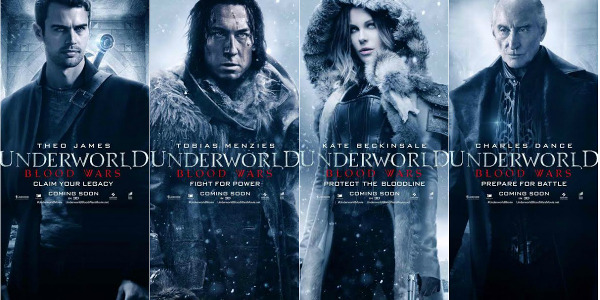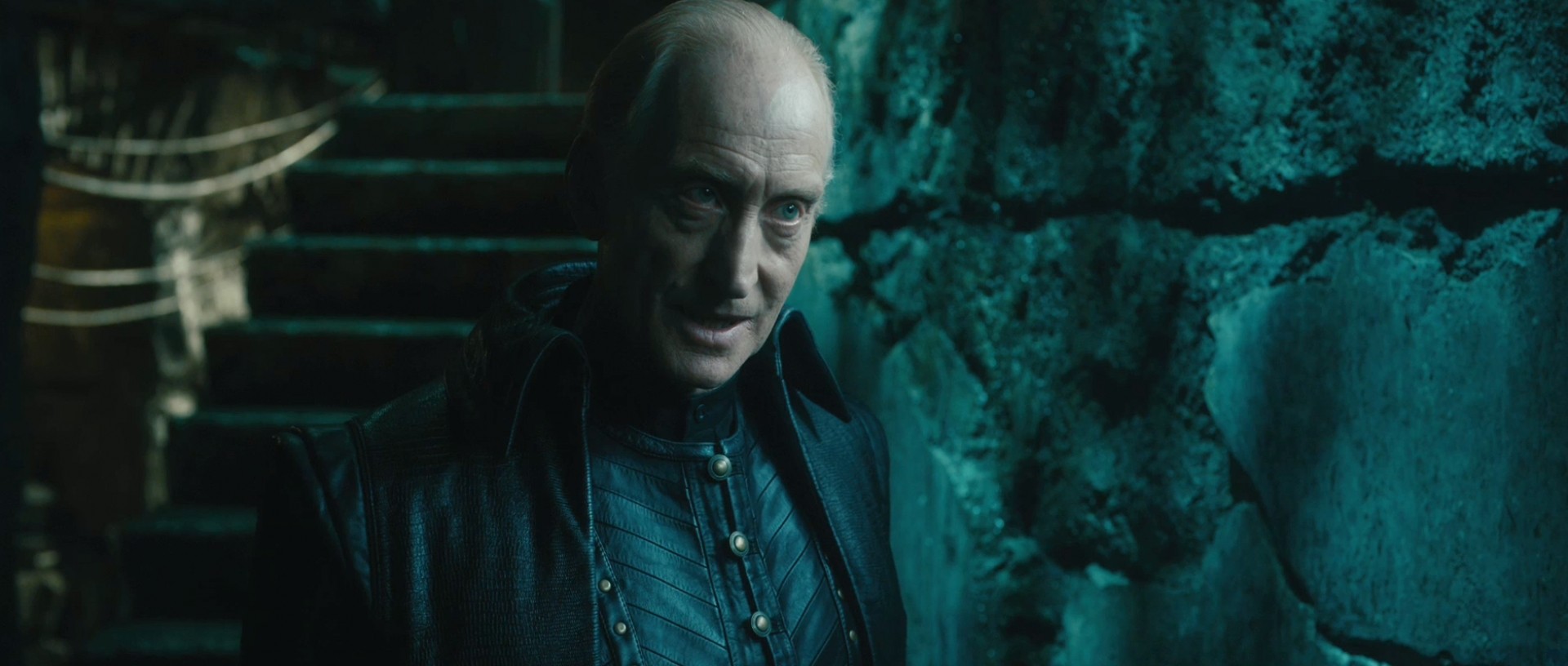We’re in the cold, desolate month of January, where most movie studios dump their unwanted movies to the big screen. When a film is projected to get poor reviews and potentially cost the studio money, they simply sacrifice it to the altar of January. This may be what Screen Gems thought was in store for their vampire versus werewolf franchise, which has been a January mainstay ever since the second entry in the five-film franchise. But to the surprise of probably just about everyone, the first Underworld became a smash hit, earning $97 million against a budget of $22 million and spawned four sequels of varying quality and a short animated spinoff. While I certainly love my character-driven dramas, epics, superheroes and entertaining action, I also have my guilty pleasures and the Underworld series is certainly one of them.
For the uninitiated, the first Underworld movie is essentially Romeo and Juliet with vamps and werewolves, called Lycans in the series. The main protagonist of the series is Selene (Kate Beckinsale), a vampire “Death Dealer” charged with eradicating the Lycan hordes. During one of her watches, she notices the Lycans have taken a curious interest in a human, following him instead of just eating him. What follows is a riff on Shakespeare’s work, only with a lot more bullets and slo-mo a la Matrix. But part of what makes the Underworld series so interesting is its sense of mythology and history and that’s largely what separates it from the usual supernatural action junk.
The Underworld films have a surprisingly rich and detailed history dating back hundreds of years, chronicling how the various wars got started and how the vampires and werewolves even came to be. In the sixth century AD, for instance, William Corvinus gets bitten by a rabid wolf and becomes the first werewolf due to mutation already present in his gene code, the Corvinus Strain as it would be called later on, which he and his brother would inherit from their father, Alexander, the first immortal. William would attack any and all humans, who would, in turn, transform into werewolves themselves. These wolves, however, were just that. Large, rabid, raging wolves, unable to take human form. Hundreds of years later, a werewolf gave birth to Lucian (Michael Sheen), the first Lycan, capable of transforming back into human form at will. This made the Lycans ideal slaves for the aristocratic vampires, who could force them to work in the sunlight. Of course, a resistance emerged and the Lycans would break free of their shackles.
The vampires, on the other hand, can trace their lineage to William’s twin brother, Marcus, who also had the same anomaly in his genetic code. Marcus was later bitten by a bat and would become the first vampire, infecting those around him and creating a new species. The vampires are very interesting in that they have a clear and layered hierarchy. There are clans, covens, elders and so on, and there are rules to this hierarchy. Only one elder can be awake at any given time while the other two must remain dormant until it’s time to shuffle the cabinet, as it were. Meanwhile, The Death Dealers were created by Viktor, who was promised immortality in exchange for his military wisdom in hopes of containing the spawn of William. Amelia would make up the third elder and the trio would wage war on the wolves for centuries. The vampires would grow in numbers over the centuries and create covens all over the world, each with their own leaders and politics. The franchise opens with the vampires appearing as the heroes of the film and the Lycans as the villains, but the series actually does a good job at showing that there are heroes and villains on both sides. As you can see, there’s actually quite a bit of lore going on here and I’m only scratching the surface. The Underworld films have enough lore going on that you can probably start a multi-media franchise based on the worldbuilding alone. Underworld RPG video anyone?
While as hokey and pulpy as it all sounds, part of what sells it all is the cast. The Underworld films continuously surprise by getting well-respected actors to sign onto their films, and no one ever phones it in. Alum of the series include the previously mentioned Kate Beckinsale (Much Ado About Nothing) and Michael Sheen (Frost/Nixon, The Queen), Charles Dance (Game of Thrones, The Crown), Tobias Menzies (Outlander, The Crown), Bill Nighy (Pirates of the Caribbean: Dead Man’s Chest, Shaun of the Dead) and Lara Pulver and Sir Derek Jacobi, both recipients of the Lawrence Olivier Award their stage work. But I think part of what makes the Underworld flicks work is that the actors and filmmakers do try to take it seriously. Sure, they’re having fun with it, but they’re also not phoning it in either, bringing their stage and dramatic chops to the floor and opposed to leaning heavily into the cheese and camp.
It’s actually incredibly wacky. There are UV bullets used against the vampires, complete with glowing blue interiors and the action is complete nonsense, riffing heavily on the wire action set pieces from The Matrix, but applying a lot of in-camera tricks. Notably though, and this is a big win for the series, but the practical costumes for the werewolves/Lycans are nothing sort of stellar. It’s actually frustrating when CGI versions are inserted into the action because the practical version of the costume looks so good. And while they didn’t look as good in the third film, which was a prequel to the core story set hundreds of years in the past during the Middle Ages, the movie worked surprisingly well because it turned antagonist Lucian into the protagonist and gave him plenty of scenes to chew on against Bill Nighy’s more menacing and cold Viktor. If you thought the first movie leaned into the Romeo and Juliet angle, the prequel, Rise of the Lycans, doubles down and the medieval setting and tragic ending actually works favourably in the kitschy re-telling of the Bard’s work. The fourth film, Underworld: Awakening, saw Beckinsale return to the series after sitting out the prequel and is the black sheep of the franchise for me, but things bounced back a bit with the fifth film, Blood Wars, helmed by Outlander and Westworld director Anna Foerster. That entry brought back the castles and European setting which was largely absent in the previous film, but had horrendous CGI and a dumb villain by the end of it.
Fans must have enjoyed the action, lore and cast, because the Underworld films have become quite popular, with four sequels and a total box office gross of almost $540 million against a combined total budget of $207 million. This is quite surprising considering the consistent poor reviews the franchise has gotten. And sure, it’s not peak cinema or anything, but I do think critics were overly harsh on the series. But looking at the box office for all five movies, I think fans of the series found something enjoyable and they stuck with it, for better or for worse. This, in combination with the lore, is why the Underworld films are arguably much more enjoyable than say, something like Paul W.S. Anderson’s Resident Evil films, which despite having seven films total in the series and over $1 billion gross, got more tiresome and unimaginative the longer it went on, not to mention it completely abandoned any connections to the iconic video game series. I never even finished that franchise, I believe I checked out after the fourth one but who can tell, I can’t even remember.
Underworld is rich in mythology and surprisingly well-acted B movie shenanigans. It embraces its lore, history and Shakespearan roots and aims to be something more than just Young Adult pandering or generic action nonsense. It has a tapestry of information that’s fun to dive into. It has some cool action, some generic stories, interesting locations and dumb villains. Yet the lore and mythology are very fun to unravel and no movie that’s dumped into January should have this much thought put into it at the end of the day.





One thought on “Guilty Pleasure: The ‘Underworld’ Series Has A Surprising Understanding of History and Mythology – ScreenHub Entertainment”